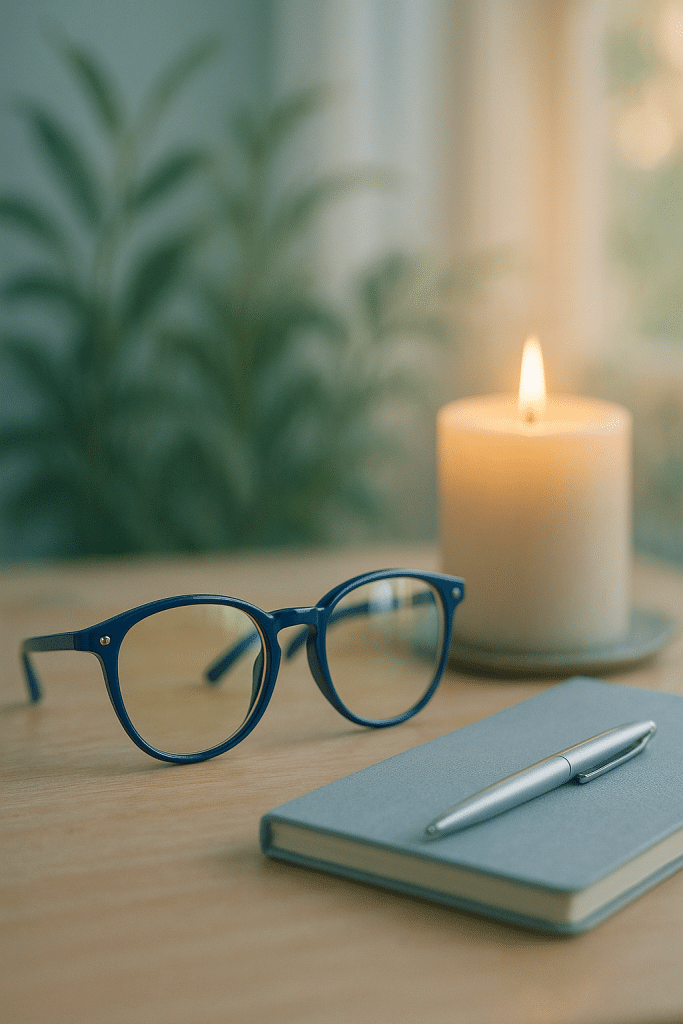Welcome! If you’re here, you’re probably curious about how blue light blocking glasses can enhance your wellness, reduce stress, and help restore balance in our digitally dominated lives. I know firsthand how overwhelming screen time can feel, and the toll it takes on our eyes, sleep, and mental clarity. That’s why I’m excited to share with you a deep dive into the blue light blocking glasses benefits—what they are, how they work, and why they’re becoming essential wellness tools for people like us who want to feel better every day.
In this article, we’ll explore the science behind blue light and its impact on our eyes and circadian rhythm. Then we’ll unpack the top five benefits of wearing blue light blocking glasses, from reducing digital eye strain and improving sleep quality to lessening headaches and boosting focus. We’ll also look at some of the best glasses available today, including options from Blue Free Optical and Nike, ensuring you have practical recommendations. Plus, I’ll share tips on maximizing their benefits and debunk common myths. If you’re ready to reclaim your eye comfort, improve your sleep, and reduce screen-induced stress, let’s dive right in!
Understanding Blue Light and Its Impact on Wellness
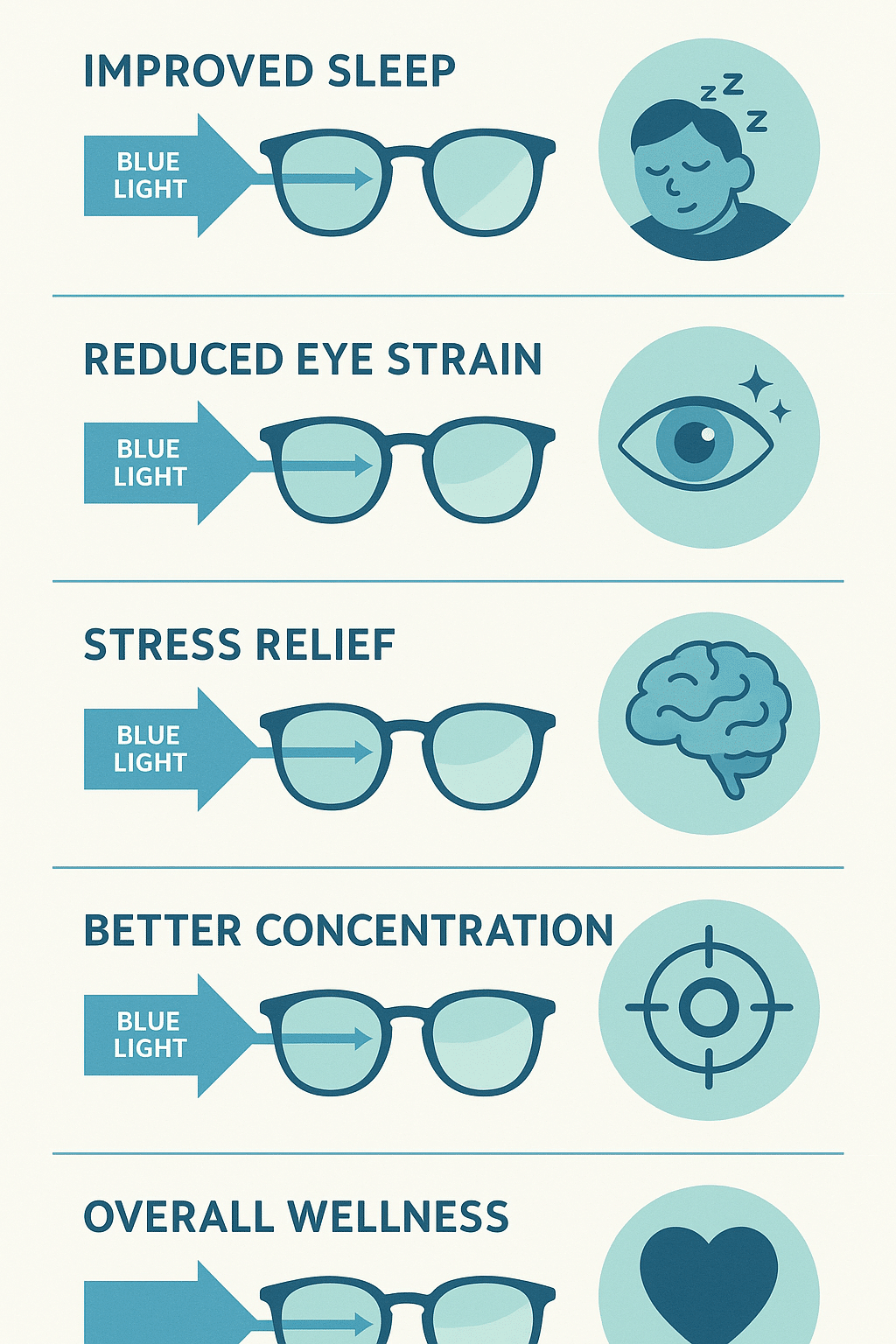
What Is Blue Light and Its Sources?
Blue light is a high-energy visible (HEV) light with wavelengths between 400 and 495 nanometers. It’s part of the natural light spectrum, emitted abundantly by the sun. Under daytime sun exposure, blue light helps regulate mood, alertness, and cognitive functions. However, the challenge arises when blue light exposure extends into artificial sources, especially screens such as smartphones, tablets, laptops, and LED lighting.
Digital devices emit a significant amount of blue light, often at wavelengths that can be harsh on our eyes, particularly indoors in dim environments. This persistent exposure, even during evening hours, can disrupt our body’s natural rhythms. Being surrounded by screens in work, home, and leisure settings pushes blue light exposure beyond healthy limits.
How Blue Light Affects Circadian Rhythm and Melatonin Production
Our biological clock, or circadian rhythm, is sensitive to light cues, primarily blue light. Normally, exposure to blue light in the morning promotes melatonin suppression, which helps us stay alert and awake throughout the day. Conversely, in the evening, reduced blue light signals our body to produce melatonin, the hormone responsible for promoting restful sleep.
Artificial blue light from screens, especially past sunset, tricks our brain into thinking it’s still daytime. This suppression of melatonin production delays sleep onset, often leading to poor sleep quality, shorter sleep duration, and daytime fatigue. Scientific studies demonstrate that blue light exposure in the evening can shift circadian rhythms, making us feel more tired at inappropriate times and degrading overall wellness.
The Relationship Between Blue Light and Digital Eye Strain
Spending prolonged hours staring at digital screens inevitably leads to digital eye strain (DES), also called computer vision syndrome. Blue light plays a major role in this by scattering more than other visible wavelengths, contributing to eye discomfort, dryness, and irritation. Symptoms commonly reported include headaches, blurred vision, double vision, and a persistent feeling of tired eyes.
Digital eye strain doesn’t only cause physical discomfort; it also impacts concentration and triggers added stress responses, intensifying tension and fatigue. For wellness-focused individuals seeking balance, reducing DES can be a crucial step toward feeling more centered and less drained.
Top 5 Benefits of Blue Light Blocking Glasses for Stress Relief and Balance
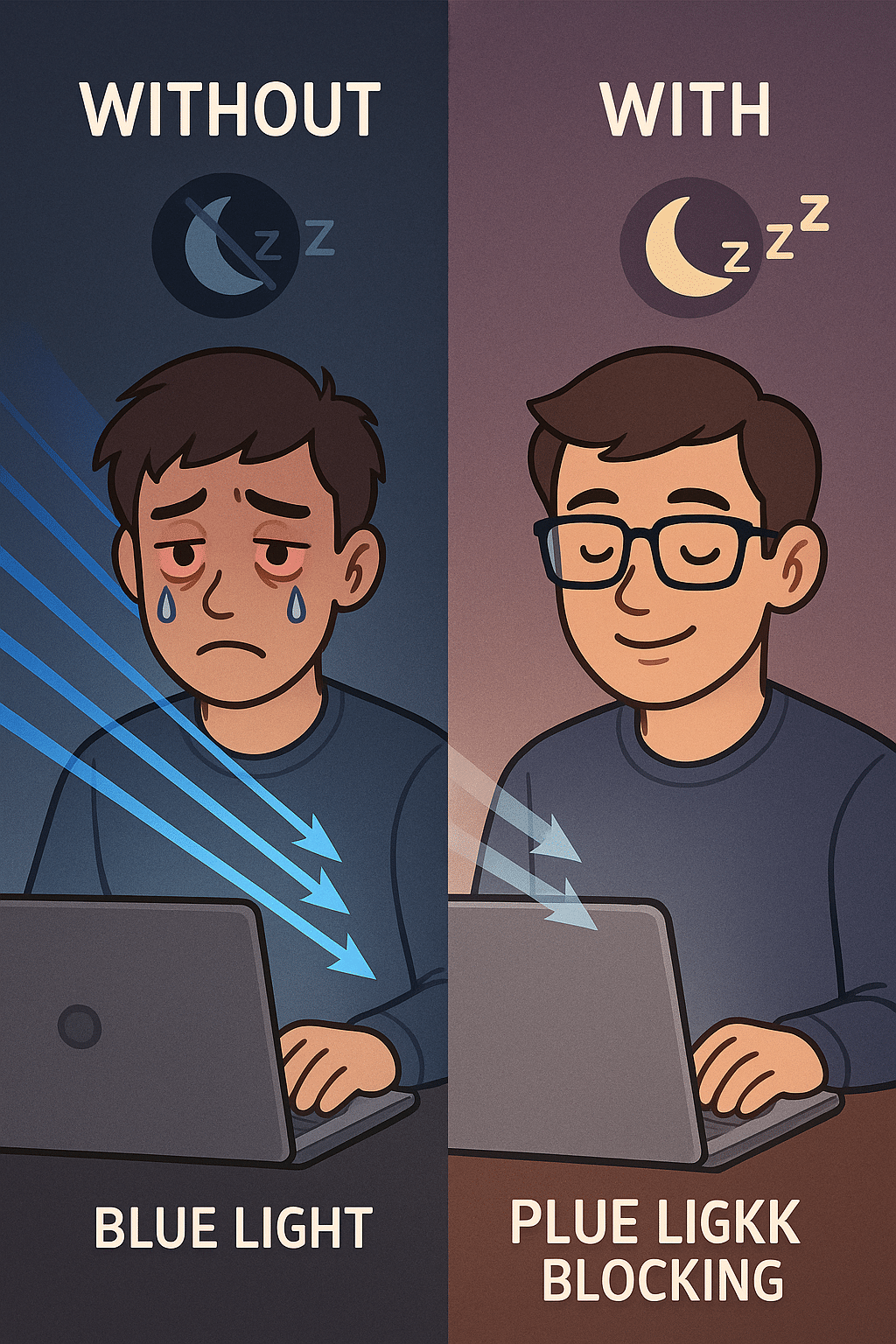
1. Reduction of Digital Eye Strain and Eye Fatigue
How Blue Light Blocking Glasses Alleviate Computer Vision Syndrome
Let’s get right to the heart of comfort: blue light blocking glasses are designed to filter out significant portions of HEV blue light emitted by screens. By reducing scattered light that spurs visual noise, these glasses allow your eyes to relax more naturally. This directly mitigates symptoms like dryness, irritation, and headaches associated with digital eye strain.
In my experience and through numerous user testimonials, people who wear blue light blocking glasses during extended screen sessions report less eye discomfort and fewer breaks required to relieve tired eyes. For example, Blue Free Optical’s daytime glasses block 100% of blue light up to 455 nm with yellow-tinted lenses infused with melanin, enhancing visual comfort without distorting color perception. This means less glare and more relaxed viewing over hours of work or leisure.
Lens Technologies That Enhance Visual Comfort
Not all blue light blocking lenses are created equal. Some glasses use multi-layer anti-reflective coatings that not only filter blue light but also reduce glare from screens and ambient lighting. Scratch-resistant coatings enhance longevity, while high-quality optical clarity materials like CR-39 lenses assure sharp vision.
Nike’s blue light blocking glasses, such as the Nike Session and Chance models, feature scratch and smudge-resistant coatings plus UV protection, so you get both indoor and outdoor eye wellness support. Their frames are lightweight and made with sustainable materials, perfect if you value comfort and style.
2. Improved Sleep Quality Through Melatonin Regulation
Nighttime vs. Daytime Blue Light Blocking Lenses
Probably one of the most life-changing benefits for me has been how these glasses help with getting better sleep. Blue Free Optical offers two types of lenses—the daytime lenses (yellow tint) for mitigating eye strain during daylight hours, and the nighttime lenses (orange tint) that block blue light up to 550 nm to support melatonin production during evening use.
Wearing nighttime blue light blocking glasses an hour or two before bed can dramatically reduce blue light interference with sleep hormones. Many users find that their sleep is deeper, they fall asleep faster, and wake up feeling more refreshed.
Behavioral Sleep Interventions Complementing Glass Use
To maximize sleep benefits, I recommend pairing blue light blocking glasses with good sleep hygiene—like reducing screen time an hour before bedtime, using dim warm lighting in the evening, and maintaining a consistent sleep schedule. The glasses act as a powerful, proactive tool within an overall behavioral approach to maintaining balanced circadian rhythm and wellness.
3. Decreased Frequency and Severity of Headaches and Migraines
Blue Light as a Trigger for Photophobia and Migraine
If you suffer from headaches or migraines, blue light can be a sneaky but significant trigger. Blue wavelengths can exacerbate photophobia (light sensitivity), a common migraine symptom. For many, prolonged exposure to harsh screen light accelerates or intensifies headaches.
Blue light blocking glasses reduce this “visual noise” and less intense stimulation to the optic nerve, which can decrease the frequency and severity of headaches for susceptible individuals. Users with migraine history often report fewer attacks after consistent use, especially those working in front of screens.
4. Enhanced Mental Focus and Stress Reduction
How Filtering Blue Light Supports Cognitive Clarity and Mood
Less eye discomfort often equates to better focus. But there’s more to it: filtering blue light reduces the sensory overload our system experiences during long screen time. This can help reduce feelings of digital fatigue, decrease stress hormone release, and promote a calmer mental state.
In fact, studies suggest that controlling blue light exposure can help maintain cognitive performance and mood stability, reducing irritability and mental fog. In stressful work-from-home settings, wearing blue light blocking glasses creates a protective boundary that supports mental clarity and emotional balance.
5. Support for Overall Wellness and Work-from-Home Balance
Blue Light Blocking Glasses as a Wellness Lifestyle Tool
For those of us carving wellness routines amidst busy schedules, blue light blocking glasses have become essential staples. They empower us to enjoy technology without compromising health. Incorporating them into daily life is a simple but effective strategy to reduce chronic stressors associated with screen overexposure.
Integrating Glasses Use with Healthy Screen Habits
Pair these glasses with mindful screen habits—regular breaks, ergonomic workspace setups, and prioritizing outdoor time for natural sunlight exposure—to optimize physical and mental wellness. Brands like EyeCandys offer minimalist, stylish frames perfect for everyday wear, blending seamlessly into a balanced lifestyle.
Comparing Leading Blue Light Blocking Glasses Brands and Features
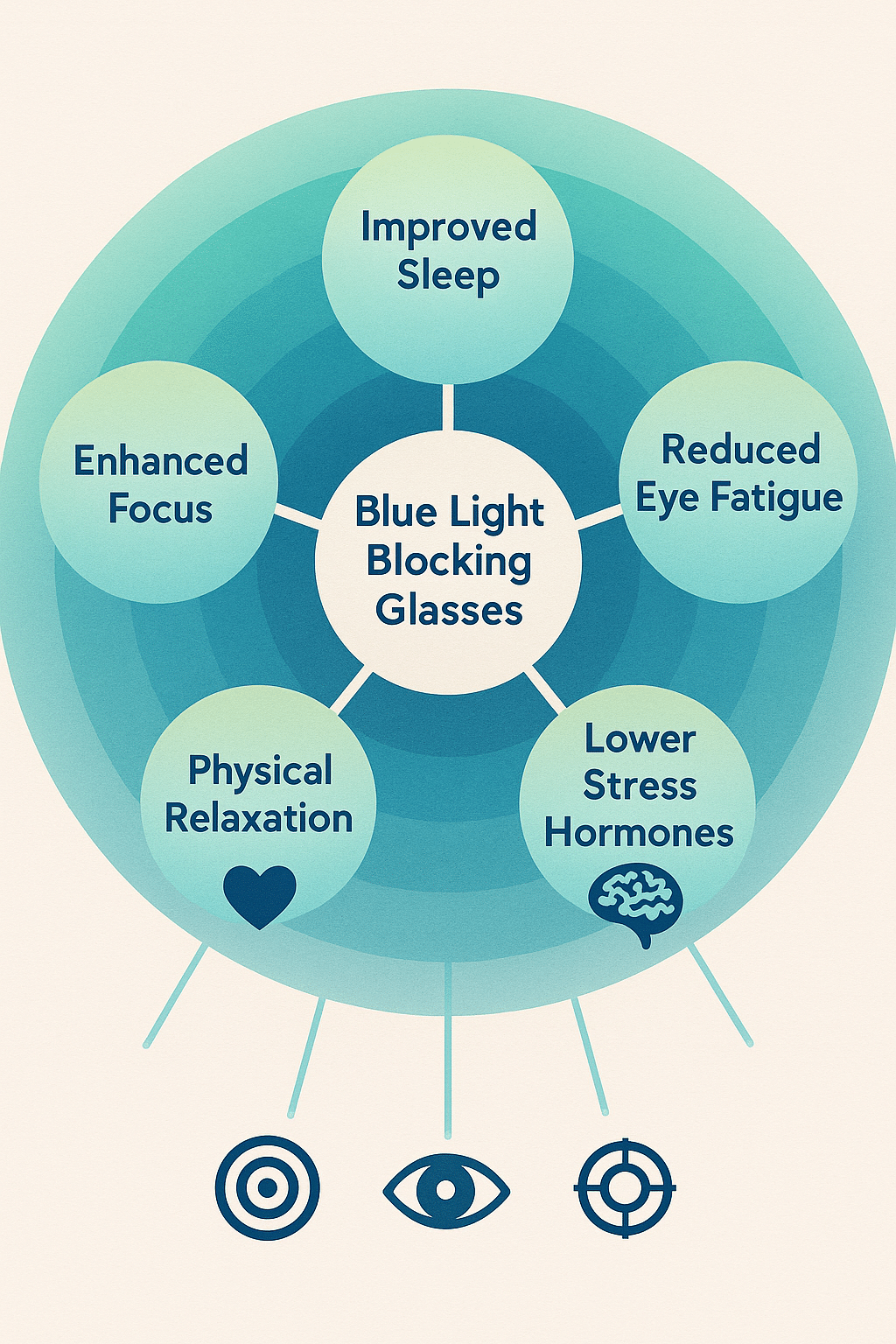
Discovering the right pair means matching your lifestyle, aesthetic preferences, and specific needs. Here’s how top brands stack up:
Blue Free Optical: Daytime and Nighttime Options with Melanin-Infused Lenses
- Strengths: Specialized lenses tailored to daytime or nighttime needs; melanin-infused lenses for natural color perception; broad blocking spectrum (100% blue light up to 455 nm in daytime, 550 nm in nighttime); multiple stylish frames.
- Extras: Prescription options, 30-day money-back guarantee, free shipping.
- Ideal for: Users seeking targeted protection and clear vision for both work hours and bedtime.
Explore their collection at bluefreeoptical.com.
Nike Blue Light Glasses: Stylish Protection with Scratch-Resistant and UV Features
- Strengths: Anti-reflective coatings, scratch and smudge resistance, UV protection, lightweight sustainable frames.
- Popular Models: Nike Session (lightweight, durable frames), Nike Chance (classic pilot style), Nike Essential Horizon (rounded shape).
- Ideal for: Active users prioritizing both function and fashion in glasses.
Check them out at nike.com.
EyeCandys: Minimalist Designs for Everyday Use
- Strengths: Sleek, versatile designs; great for medium-fit faces; comfortable for all-day wear.
- Ideal for: Wellness seekers wanting discreet, fashionable protection.
- Shop at eyecandyss.shop.
Vitalscend and Other Recommendations
While specific Vitalscend glasses information is limited, brands like Bon Charge, Vincero Collective, Fondvue, and VisionGuard offer excellent alternatives featuring:
- Full spectrum blue and green light blocking (400-550 nm).
- Frames crafted from premium materials like Italian Mazzucchelli Acetate.
- Prescription options and added lens coatings for anti-glare and scratch resistance.
Visit their sites at:
- Bon Charge: us.boncharge.com
- Vincero Collective: vincerocollective.com
- Fondvue: fondvue.com
- VisionGuard: Available on amazon.com
Unique Perspectives: Blue Light Blocking Glasses Beyond Eye Health
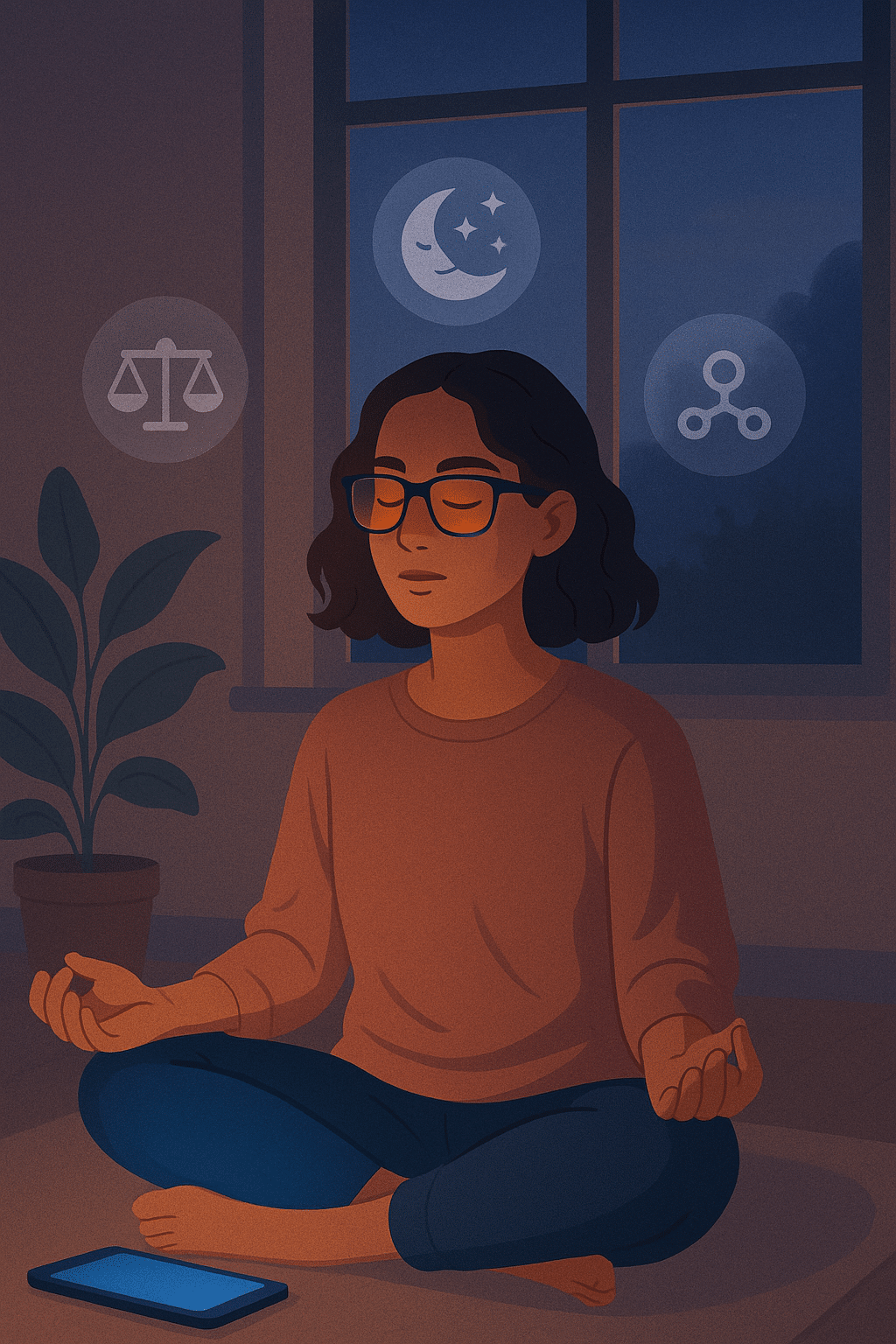
The Role of Blue Light Glasses in Enhancing Digital Detox Practices
Incorporating blue light blocking glasses into digital detox routines helps create physical and psychological boundaries from constant screen bombardment. Wearing them can signal a shift toward intentional tech use, reduce sensory overload, and promote mindful transitions from work to rest.
Potential Psychological Benefits in Reducing Screen-Induced Stress
Many users report decreased irritability, anxiety, and mental exhaustion when using blue light blocking glasses consistently. By decreasing visual strain and improving sleep, they indirectly support emotional balance, making them valuable tools in holistic stress management.
Future Trends: Personalized Blue Light Filtering Based on Circadian Profiles
Emerging technologies increasingly focus on customized blue light filters tailored to individual circadian rhythms or light sensitivity levels. This personalization will enhance efficacy and comfort, aligning eyewear precisely with users’ biological needs.
Practical Tips for Maximizing the Benefits of Blue Light Blocking Glasses
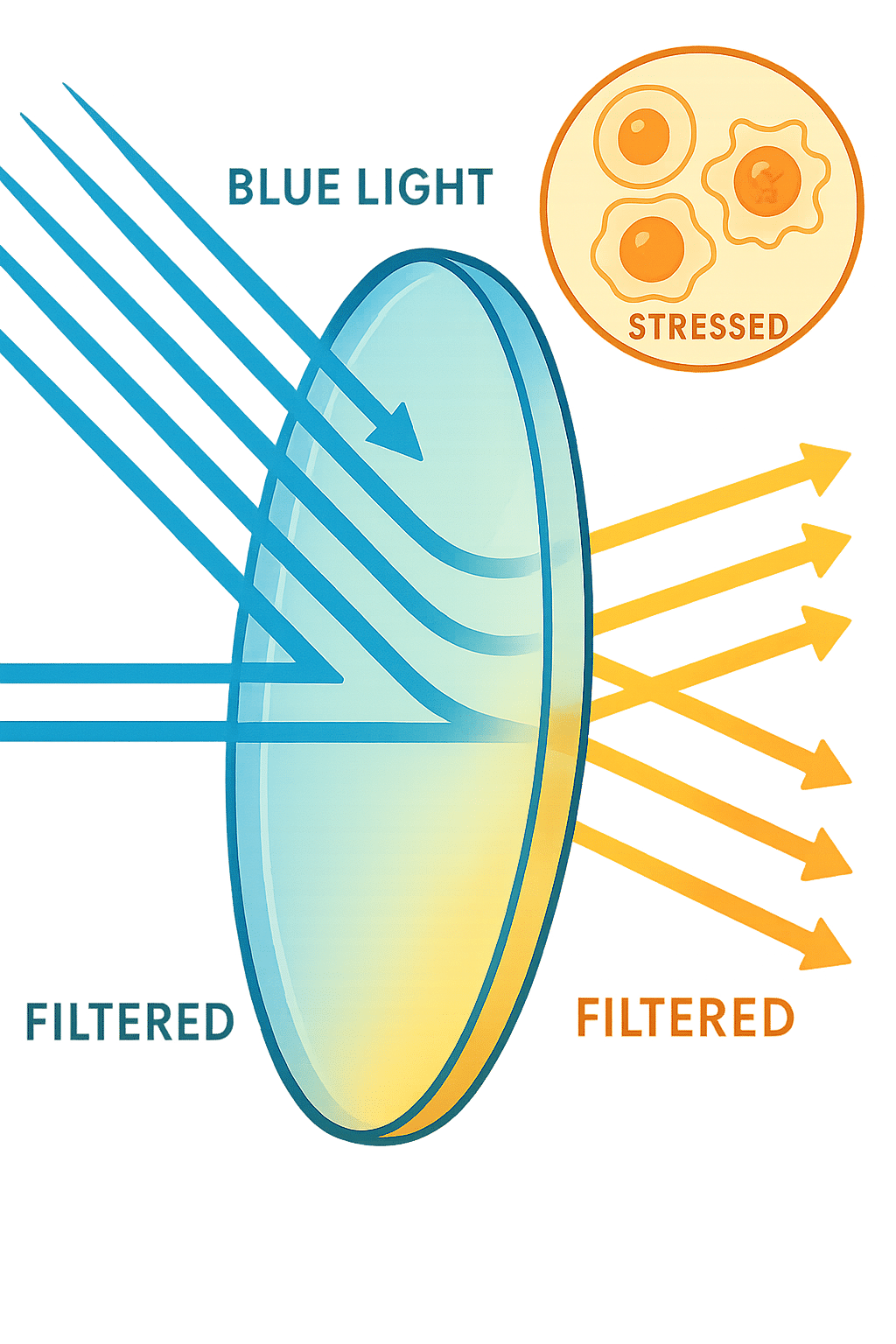
Best Practices for Consistent Use and Timing
- Wear daytime glasses during work hours, especially if you spend 4+ hours daily at screens.
- Switch to nighttime blue light blocking glasses 1-2 hours before bedtime to support melatonin.
- Combine glasses with regular breaks following the 20-20-20 rule (every 20 minutes, look at something 20 feet away for 20 seconds).
Choosing the Right Lens Tint and Frame Style for Your Needs
- Yellow-tinted lenses for all-day comfort without color distortion.
- Orange-tinted lenses for evening use focused on melatonin preservation.
- Select frame shapes and sizes that fit comfortably and match your personal style—for example, EyeCandys’ rimless for minimalistic looks or Nike for sporty style.
Combining Blue Light Blocking Glasses with Environmental and Lifestyle Adjustments
- Use warm, dim lighting in the evening.
- Minimize ambient screen reflections.
- Incorporate outdoor time to expose eyes to natural light.
- Maintain good posture and ergonomic setups to reduce overall digital fatigue.
Addressing Common Questions and Myths About Blue Light Blocking Glasses
Do Blue Light Blocking Glasses Really Work?
Yes, numerous scientific studies and user reports confirm these glasses reduce blue light exposure, alleviate eye strain, and improve sleep quality. The key is consistent and proper use relative to your lifestyle.
Are There Any Limitations or Risks?
They aren’t a cure-all. Blue light blocking glasses reduce symptoms but don’t fix underlying eye conditions or poor sleep hygiene. Some cheaper glasses may not block significant blue light; choose reputable brands with tested filters.
How to Identify Quality Blue Light Blocking Glasses?
Look for lenses that specify the percentage and wavelength range of blue light blocked. Additional features like anti-reflective coatings, UV protection, and scratch resistance signal quality. Reading verified reviews helps too.
Can Blue Light Blocking Glasses Help With Anxiety?
Indirectly, yes. By reducing eye strain and improving sleep, they lower physiological stress, which can help decrease anxiety symptoms. However, they shouldn’t replace professional mental health treatments.
Are Prescription Blue Light Blocking Glasses Available?
Absolutely. Brands like Blue Free Optical and Bon Charge offer prescription lenses with blue light filtering, which is excellent for those needing vision correction who want to protect their eyes.
Quick Takeaways / Key Points
- Blue light comes from the sun and screens; excessive exposure disrupts sleep and causes eye strain.
- Blue light blocking glasses filter harmful wavelengths, reducing eye discomfort and supporting melatonin production.
- Benefits include reduced digital eye strain, better sleep, fewer headaches, improved focus, and enhanced overall wellness.
- Top brands like Blue Free Optical and Nike offer advanced lens technologies and stylish frames.
- Consistent use paired with good screen habits and proper lighting maximizes benefits.
- Quality matters—look for proven lens effectiveness and coatings.
- These glasses can play a key role in digital detox and stress reduction strategies.
Conclusion: Integrating Blue Light Blocking Glasses Into Your Wellness Routine
If you’re striving for better stress management, restful sleep, and improved eye comfort, adding blue light blocking glasses to your daily wellness toolkit is a smart, science-backed choice. They help you navigate the challenges of modern screen-heavy environments with greater ease and balance. I encourage you to explore models that suit your style and needs, such as Blue Free Optical’s daytime and nighttime collections for targeted protection, or Nike’s sporty, durable frames for all-day wear.
Remember, these glasses are most effective when combined with mindful digital habits, ergonomic setups, and healthy lighting. By prioritizing your visual and mental health in this way, you create space for recovery, clarity, and stress relief, empowering you to stay balanced amid today’s digital demands.
Why wait? Take action today for your wellness—invest in your eyes, your sleep, and your peace of mind by choosing a pair of blue light blocking glasses that work best for you. Your future self will thank you.

